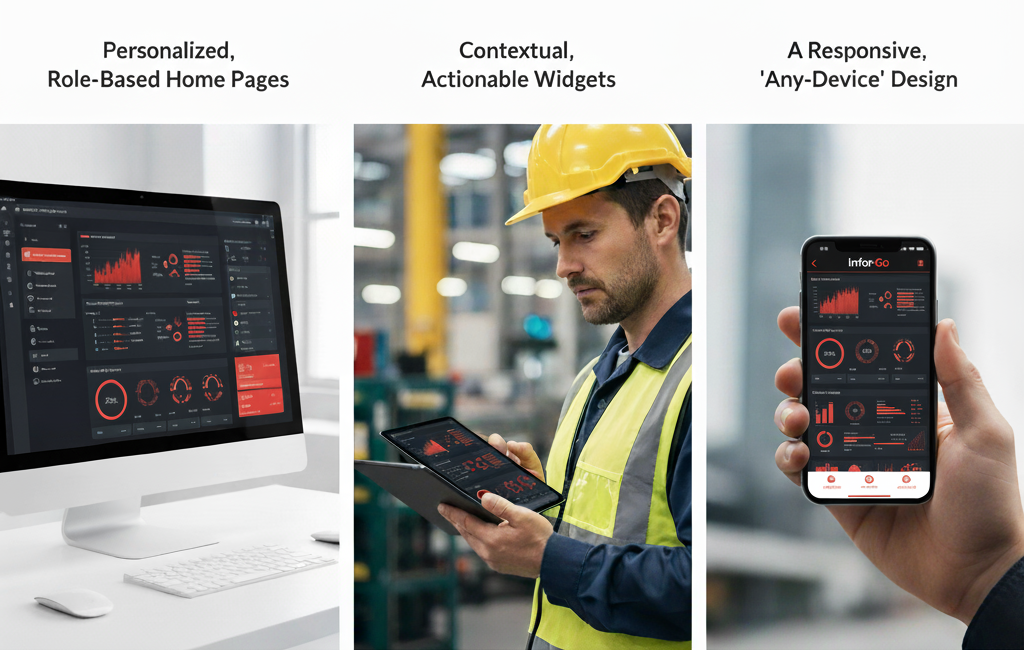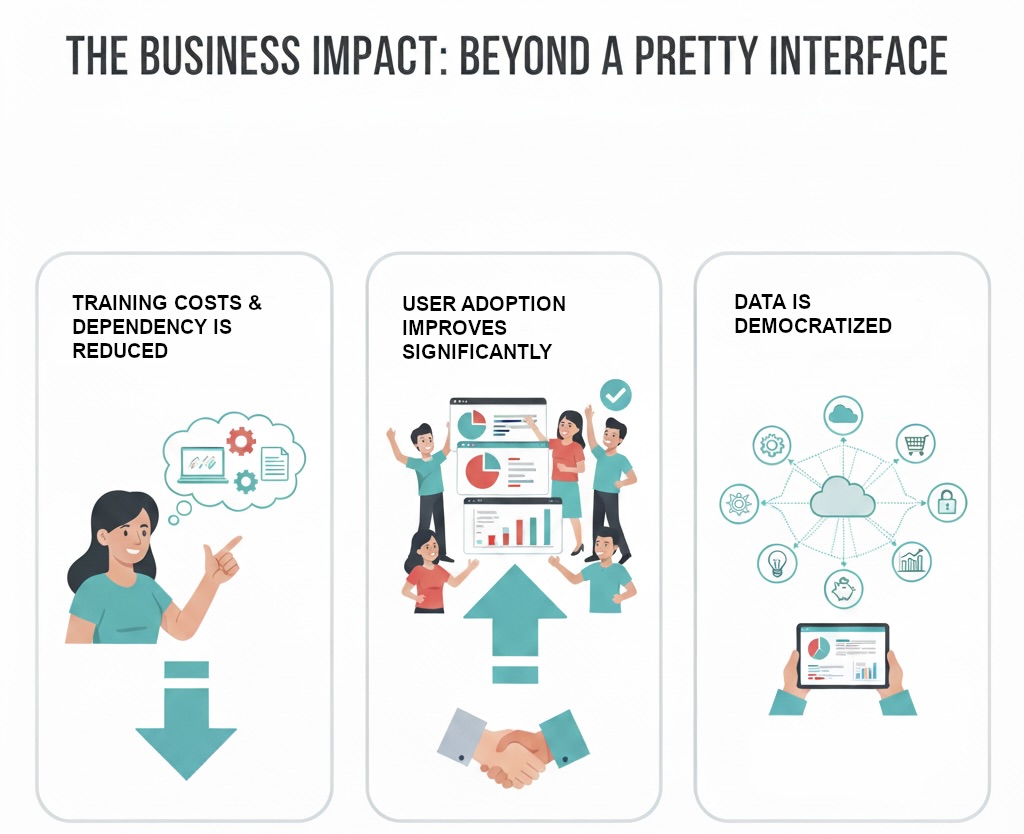The ERP That Doesn’t Feel Like an ERP

The unspoken rule of enterprise software was that power came at the price of complexity.
We accepted that our ERP systems, while functionally robust, required extensive training, complex navigation, and a specialist’s mindset.
We learned to operate them because we had to. But what if the most powerful tool was also the easiest to use?
In today’s market, most ERP systems within the same tier offer the core features a business needs.
The real bottleneck for efficiency, therefore, is no longer a missing functionality—it’s the friction in user experience.
The true measure of an ERP’s value has shifted to its adoption rate: how willingly and effectively people across the entire organization can use it to do their jobs.
This is the principle behind Infor’s shift towards a “consumer-grade” user experience.
The goal is to deliver the power of a tier-one ERP with the intuitive simplicity of the apps we use every day. This philosophy of openness and flexibility extends beyond the user interface and into the very architecture of the system, a concept I explored in my article on the Composable ERP.

From a Specialist’s Tool to a Company-Wide Platform
This transformation is built on a few core pillars that fundamentally change how users interact with their ERP:
- Personalized, Role-Based Home Pages: The era of one-size-fits-all menus is over. A modern ERP greets you with a homepage tailored to your specific role, transforming the user’s main screen into a dynamic dashboard. A warehouse manager can see real-time inventory levels and pending shipments, while a financial controller views key cash flow metrics. Everything you need, and nothing you don’t.
- Contextual, Actionable Widgets: Instead of navigating through dozens of sessions to find information, data now comes to the user. Contextual widgets provide live information directly on the homepage. A perfect example of this philosophy is the p2-i widget, which also allow users to build their own real-time data lists without requiring technical assistance. This turns a passive homepage into an active, personalized dashboard, empowering users to monitor their KPIs at a glance.
- A Responsive, “Any-Device” Design: Built on modern HTML5 Frontend architecture, the Infor LN interface is fully responsive. This means the ERP works seamlessly on a desktop in the office, a tablet on the factory floor, or through dedicated Infor vertical apps on a smartphone for specific, on-the-go tasks. It behaves like any modern web application, accessible whenever and wherever work needs to get done.

The Business Impact: Beyond a Pretty Interface
This is not just about aesthetics; it’s about tangible business results. When an ERP is easy to use:
Training costs plummet & dependency is reduced. An intuitive interface that adheres to universal web design standards—the hamburger menu is exactly where you expect it—dramatically shortens the learning curve. More importantly, the ability to personalize individual session layouts for a user or group is a no-code process. This empowers key users to tailor their own screens—hiding unnecessary fields or rearranging the layout—autonomously, without constant reliance on the vendor.
User adoption improves significantly.
People are more likely to embrace a tool that helps them, rather than hinders them. This leads to better data quality and process compliance.
Data is democratized. The ERP is no longer a silo accessible only to a few power users. Critical business information becomes available to everyone, enabling faster, more informed decisions at every level of the organization.
The most successful ERP implementation is the one that disappears into the workflow.
The future of enterprise software is not about adding more complexity, but about making its inherent power accessible to everyone.
The best ERP is the one that people actually want to use.
Written by Andrea Guaccio
October 30, 2025